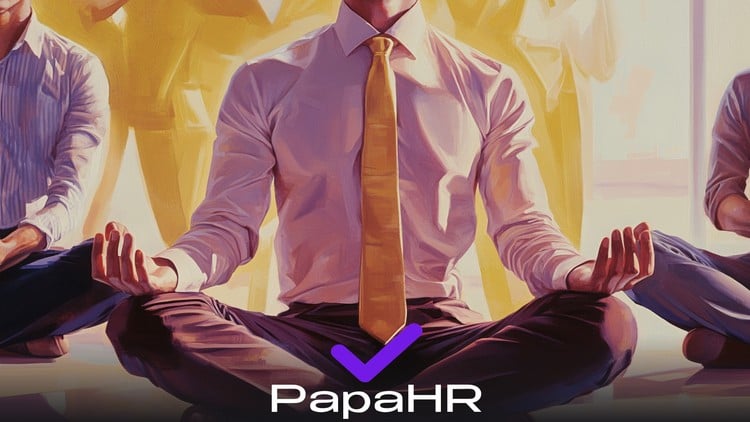
Workplace Wellness | Employee WellBeing | HR Strategy | Burnout Prevention | Wellness Program Design | Mental Health
⏱️ Length: 3.5 total hours
⭐ 4.66/5 rating
👥 5,429 students
🔄 October 2025 update
Add-On Information:
Note➛ Make sure your 𝐔𝐝𝐞𝐦𝐲 cart has only this course you're going to enroll it now, Remove all other courses from the 𝐔𝐝𝐞𝐦𝐲 cart before Enrolling!
- Course Overview
- Unlock the transformative power of comprehensive employee well-being programs. This course goes beyond superficial perks to equip you with the strategic frameworks and practical tools needed to cultivate a thriving workplace culture that prioritizes the holistic health of your workforce. You’ll gain a deep understanding of how investing in employee wellness is not just a benefit, but a fundamental driver of organizational success, impacting productivity, retention, and overall business resilience.
- Navigate the evolving landscape of employee well-being, moving from reactive measures to proactive, integrated strategies. We’ll explore how to build programs that address the multifaceted needs of today’s workforce, fostering an environment where employees feel supported, valued, and empowered to perform at their best. This course is designed for HR professionals, managers, and organizational leaders seeking to implement impactful well-being initiatives that yield tangible results.
- Who Should Attend?
- HR Professionals & Specialists: Elevate your role from administrator to strategic wellness architect, designing and implementing programs that align with business objectives.
- Organizational Leaders & Executives: Understand the ROI of well-being and how to champion initiatives that foster a healthier, more engaged workforce.
- Department Managers & Team Leads: Develop practical approaches to support your team’s mental and physical health, reducing burnout and improving performance.
- Consultants & Wellness Practitioners: Deepen your expertise in program design and strategy to better serve your clients.
- Anyone interested in fostering a positive and sustainable work environment by understanding the critical link between employee well-being and organizational success.
- Course Content Highlights (Beyond “What You Will Learn”)
- The Psychology of Workplace Well-being: Delve into the behavioral science that underpins employee motivation, engagement, and resilience, understanding how to leverage these insights in program design.
- Measuring Impact and ROI: Discover sophisticated methodologies for tracking program effectiveness, demonstrating the financial and qualitative benefits of well-being investments beyond simple participation rates.
- Integrating Well-being into the Employee Lifecycle: Learn how to embed well-being considerations into recruitment, onboarding, performance management, and offboarding processes for sustained impact.
- Designing for Diverse Needs: Explore strategies for creating inclusive well-being programs that cater to the unique requirements of a varied workforce, considering different demographics, work arrangements, and personal circumstances.
- Building a Culture of Psychological Safety: Understand the foundational elements of trust and openness required for employees to feel comfortable discussing mental health and seeking support without fear of reprisal.
- Leveraging Technology for Well-being: Explore the role of digital tools and platforms in delivering engaging and accessible well-being resources, from mindfulness apps to virtual coaching.
- Legal and Ethical Considerations: Navigate the compliance aspects and ethical responsibilities associated with implementing employee well-being programs, ensuring data privacy and fairness.
- Crisis Intervention and Support Frameworks: Equip yourself with basic knowledge and referral pathways for supporting employees experiencing significant distress or mental health challenges.
- The Future of Workplace Well-being: Anticipate emerging trends and best practices that will shape employee well-being in the coming years.
- Skills Covered / Tools Used
- Strategic Planning: Developing long-term vision and actionable roadmaps for well-being initiatives.
- Data Analysis & Interpretation: Utilizing metrics to assess program effectiveness and identify areas for improvement.
- Stakeholder Engagement: Building consensus and securing buy-in from leadership, employees, and relevant departments.
- Program Design & Development: Crafting tailored interventions and resources that meet specific organizational needs.
- Communication & Change Management: Effectively communicating program benefits and guiding organizational adoption.
- Needs Assessment Methodologies: Employing surveys, focus groups, and data analysis to understand employee requirements.
- Budgeting & Resource Allocation: Planning and managing financial resources for well-being programs.
- Risk Assessment: Identifying potential pitfalls and developing mitigation strategies for program implementation.
- Benefits / Outcomes
- Enhanced Employee Engagement & Productivity: Foster a workforce that is more motivated, focused, and performs at a higher level.
- Reduced Absenteeism & Presenteeism: Minimize lost workdays and improve the effectiveness of employees when they are present.
- Improved Talent Acquisition & Retention: Become an employer of choice by demonstrating a genuine commitment to employee welfare.
- Stronger Organizational Culture: Cultivate a positive, supportive, and resilient work environment.
- Mitigated Burnout & Stress: Proactively address and reduce the impact of workplace stressors on employees.
- Increased Innovation & Creativity: Empower employees to think outside the box in a psychologically safe and supportive setting.
- Demonstrable ROI: Quantify the business value of well-being programs through data-driven insights.
- Empowered HR Professionals: Gain the confidence and expertise to lead significant organizational change through well-being strategies.
- PROS
- Comprehensive Curriculum: Covers a wide range of essential topics from foundational concepts to advanced strategies.
- Practical Application Focus: Emphasizes actionable insights and tools for immediate implementation.
- High Student Engagement & Rating: Indicated by a strong 4.66/5 rating and a large student base, suggesting valuable and well-received content.
- Regular Updates: The October 2025 update suggests the course content is current and evolving with industry trends.
- CONS
- Requires Active Participation: The course’s effectiveness hinges on the learner’s willingness to actively engage with the material and apply the learned concepts within their own organizational context.
Learning Tracks: English,Business,Human Resources
Found It Free? Share It Fast!